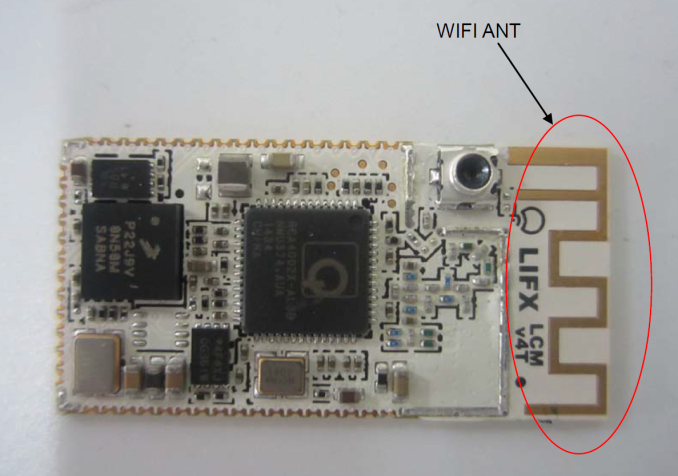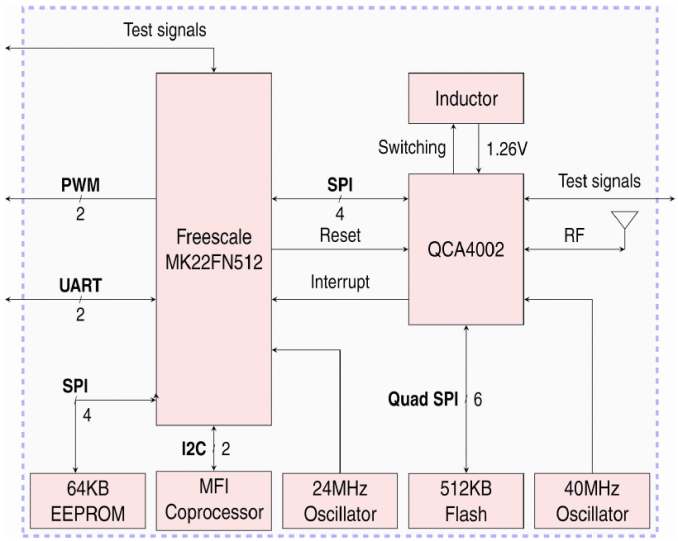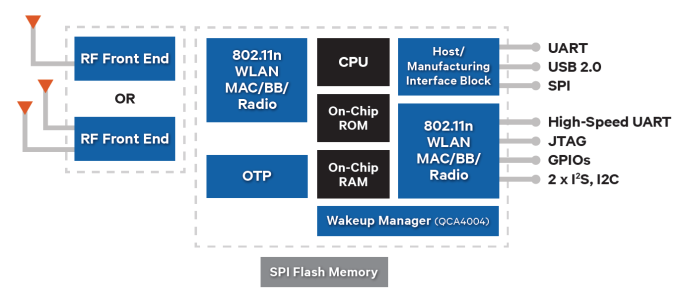LIFX White 800 Smart Bulb Review
by Ganesh T S on June 12, 2015 9:55 AM EST- Posted in
- Home Automation
- Wi-Fi
- Qualcomm Atheros
- LIFX

Introduction and Component Analysis
The Internet of Things (IoT) revolution has sparked an increased interest in home automation. Lighting is one of the major home automation aspects. LIFX is one of the popular crowdfunded companies in this space to have come out with a successful product. The success of their multi-colored LED bulbs brought venture capital funding, allowing them to introduce a new product in their lineup - the White 800. The launch of the White 800 also coincided with firmware v2.00 for the LIFX bulbs.
The initial products from LIFX were multi-color LED bulbs similar to the Philips Hue. The new LIFX White 800 is a white LED bulb with tunable color temperature. Color temperature is an important aspect in the lighting environment. In addition to visual comfort, it also affects human behavioral aspects. Different color temperatures are desirable for different human activities. Therefore, tunable color temperature in a single light bulb is a good thing to have. The specifications of the White 800 indicate 890 lumens of brightness (60W-equivalent), 25000 hours lifetime (22.8 years @ 3 hrs/day), 11 W power consumption and tunable color temperature from 2700K to 6500K.
The first generation LIFX bulbs relied on Broadcom's WICED platform. It also had a TI chip for 802.15.4 mesh networking. However, the White 800 gets rid of the mesh networking aspect and uses the QCA 4002 low-power Wi-Fi platform. This enables a lower price point for the White 800 compared to the other bulbs in the LIFX lineup.
At the heart of the unit is the lighting control module (LCM). LIFX also seems to be targeting this board towards OEMs in addition to using it within the White 800.
LIFX Lighting Control Module (FCC filing)
THe LCM documentation gives more insight into the internal components of the board.
The unit uses a Freescale Kinetis micrcontroller (ARM Cortex-M4-based) coupled with the Qualcomm Atheros QCA 4002. The QCA 4002 is very similar to the AR9330 used in the Ubiquiti mFi devices. The integrated CPU is MIPS-based. It is tuned for low power operation and, correspondingly, lower host CPU performance. The AR933x can run full Linux, but the QCA 400x is targeted towards embedded platforms. In the LIFX, the configuration (QCA 4002) is a 1x1 802.11n 2.4 GHz connectivity platform with the RF switches integrated.
The use of the QCA 4002 software stack on the Kinetis microcontroller allows for AllSeen / AllJoyn certification (the IoT standard backed by Qualcomm). The LIFX White 800 also carries the 'works with nest' logo, thanks to the cloud back-end.
We have looked at the internal hardware in the LIFX White 800. In the next section, we look at what the average consumer sees - the setup and usage process.













55 Comments
View All Comments
jjj - Friday, June 12, 2015 - link
I hate it when the term"smart"gets abused like this. Unless there is something smart about it and you failed to mention it, this is just a connected bulb. If it could at least auto-adjust brightness and be able to detect people ,then maybe it could be called smart.Why does everybody wants to screw the user by injecting themselves in the middle. Sure not a huge problem here like with locks but they really need to stop it with their own servers.
And 40$ for a bulb is beyond outrageous , when normal LED bulbs cost a few times less and they are seen as very expensive anyway, you can't do this and pretend the product is viable.
Then on the software side you can't have an app for every connected device in a home and for now that's a mess.
I get it that it's new and cool so you get carried away but the thing speaks volumes about the state of IoT. Poorly thought, poorly executed ,dumb and overpriced. Not that it's easy to do better given the mess when it comes to standards, software and even the less than optimal silicon solutions but it feels likely people can't even be bothered to try.
I guess being able to rent one (lol) would be useful if you aren't sure what temperature to buy so you just test a few and then go buy a normal bulb.
name99 - Friday, June 12, 2015 - link
I'm a little curious as to WTF their app thinks it's doing. Is this standard for Android?They want
- location. OK, that's a reasonable use case for on/off geo-fencing when I enter/leave the house.
- WiFi connection info? Why? Is this so the app can say "I can't find the lightbulb on WiFi network X, try another network?" I'd have thought
[a] the way to set this up properly is to bring Bluetooth or NFC into the mix. That's the way the most modern user-friendly set-ups for these devices are going.
it's the job of the OS to tell the user the WiFi network and ask for that to be changed. Having apps do this seems both broken in terms of UI+functionality and one more damn thing that should not be the app's business.
- Identity. Why?
- camera/microphone/photos? WTF????
name99 - Friday, June 12, 2015 - link
sorry, didn't mean to bold the above. Didn't realize your markup would interpret [ b ] that way.zepi - Friday, June 12, 2015 - link
At least philips hue supports functions like "make the my lights mimic the colors of this image / whatever comes from camera" and some 3rd party apps also control the lights to the beat of the music that is being played.And hues are slow compared to lifx, which probably would even work nicely as a color strobe at the party (the fancy RGB version).
fic2 - Friday, June 12, 2015 - link
Downloaded the Light Meter app to check my cheap ($2) LED bulb temps. They say they are 2700K but look closer to 3000K to me. Which is great since I would rather have 3000K temp. I wish stores would stock different temp bulbs though.fic2 - Friday, June 12, 2015 - link
I would love to change light temps on my bulbs but for a $38 difference in bulb price I'll stay with one temp. Maybe in 5-10 years these will be cheap.jonsmirl - Friday, June 12, 2015 - link
What did they use for an AC power supply chip?mkozakewich - Friday, June 12, 2015 - link
I wish we'd move entirely away from colour temperature. Black-body radiators are kind of restrictive. I'd prefer to be able to select from RGB or something. Maybe some time I'll want a sunset purple. Usually I want something very close to white, except with more yellow. Pantone lightbulbs!Also, it shouldn't be hard to make 1600-lumen bulbs, now. I remember hearing about LEDs with 200-lumens-per-watt efficacy back in 2009, but they still don't seem to be delivering. I've got a Philips bulb that uses nine ultraviolet LEDs under fluorescing panels, but it's still 12.5 Watts for 800 lumens (64 lumens/Watt or 88 lumens per LED).
Those 'corncob' lights are interesting. Check this out: http://www.renesola.ca/renesola-20w-led-corn-light...
By the nature of arrays, they go up to 100 W or more.
melgross - Saturday, June 13, 2015 - link
The multiple LED bulbs, such as the corncobs, are the least efficient, as they use older LEDs. Cree has bulbs that are from 85-100 lumens/watt. Next year, we'll see over 100. There has never been a 200 lumen/watt LED out of the lab.Coldsnap - Friday, June 12, 2015 - link
This is actually pretty exciting. The dream is to have the full house setup with smart bulbs that can change the color temp automatically throughout the day to mimic what the sun is actually putting off temp wise. This would actually make a BIG difference in energy during the day and sleep quality, if you are the type who is in doors most the day.